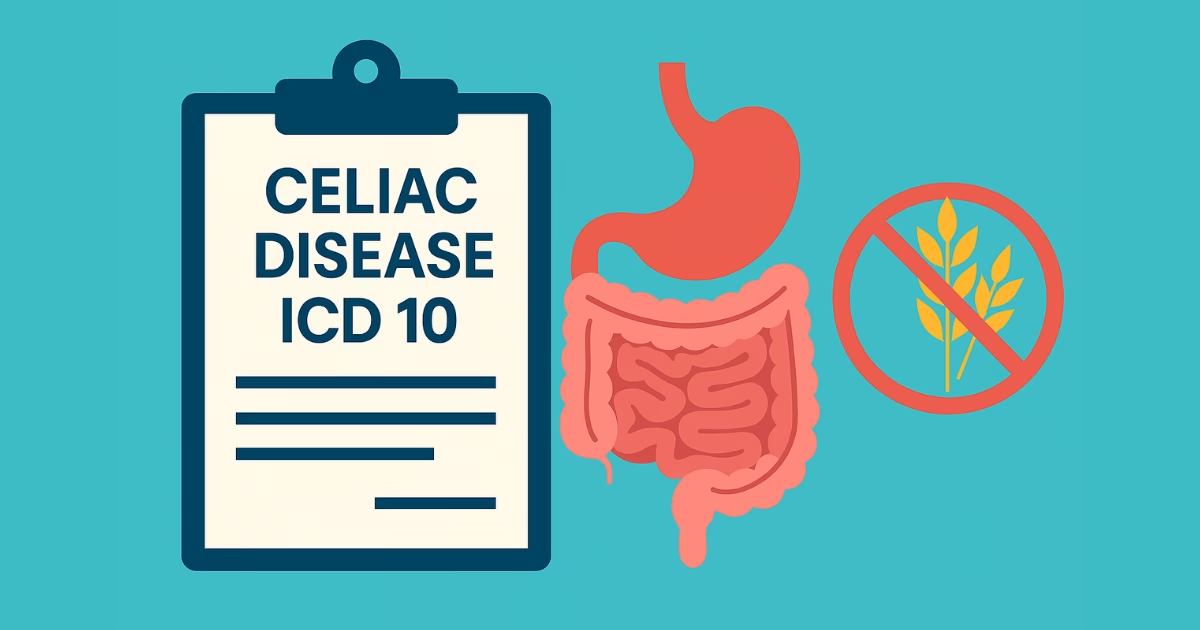Celiac disease is a serious autoimmune condition triggered by gluten, a protein found in wheat, barley, and rye. When people with celiac disease consume gluten, their immune system attacks the small intestine, causing damage and preventing proper nutrient absorption. Diagnosing and coding this condition correctly is essential for effective treatment and insurance purposes. This is where the celiac disease icd 10 code plays a critical role. The ICD-10 coding system helps healthcare providers classify and document the diagnosis accurately. Understanding the specific ICD-10 code for celiac disease not only improves medical record keeping but also supports proper billing and patient care. This article will explore the details of celiac disease, its ICD-10 codes, and the importance of accurate medical coding in managing this condition.
Understanding Celiac Disease ICD 10 Codes
The International Classification of Diseases, 10th Revision (ICD-10), is a standardized system used globally to classify medical diagnoses. Each disease or condition is assigned a specific code, allowing clear communication between healthcare providers, insurers, and researchers. For celiac disease, the ICD-10 code is K90.0. This code falls under the broader category of intestinal malabsorption disorders (K90), which covers conditions where the small intestine cannot absorb nutrients properly.
Accurate use of the celiac disease icd 10 code is crucial for several reasons. It ensures patients receive the correct diagnosis documentation, helps streamline insurance claims, and assists in tracking disease prevalence and outcomes. Misclassification or inaccurate coding can lead to billing issues or delays in treatment authorization, which is why understanding and applying this code properly is essential for healthcare providers and medical coders alike.
What is Celiac Disease?
Celiac disease is an autoimmune disorder. It occurs when the body’s immune system reacts to gluten. Gluten is a protein found in wheat, barley, and rye. For people with celiac disease, eating gluten causes the immune system to attack the small intestine. This damages tiny finger-like projections called villi, which absorb nutrients. When the villi are damaged, the body cannot absorb nutrients well. This leads to malnutrition and other health problems.
The disease can affect people of all ages. It is often hereditary, meaning it runs in families. Some people carry genes that make them more likely to develop celiac disease, but not everyone with these genes will get the condition. Symptoms vary widely. Some have severe digestive problems, while others might have no symptoms at all. Because of this, many cases remain undiagnosed or misdiagnosed.
Symptoms and Diagnosis of Celiac Disease
Symptoms of celiac disease can be different from one person to another. Common symptoms include diarrhea, abdominal pain, bloating, and weight loss. Others might experience fatigue, anemia, skin rashes, or joint pain. Some people only have subtle symptoms like headaches or depression, which makes diagnosis harder.
Diagnosing celiac disease involves several steps. Doctors usually start with blood tests to check for specific antibodies. If these tests suggest celiac disease, the next step is often an endoscopy with a biopsy of the small intestine. This confirms if there is damage to the villi.
Genetic testing may also be used to check for genes linked to celiac disease. However, a positive gene test alone is not enough for diagnosis.
Proper diagnosis is critical for assigning the right celiac disease icd 10 code, which reflects confirmed celiac disease rather than suspected or related conditions.
Medical Coding and Billing for Celiac Disease
Medical coding plays a big role in managing celiac disease. The ICD-10 system provides a clear way to document diagnoses. The specific code for celiac disease is K90.0. Using this code correctly is important for medical records and insurance billing.
Sometimes, mistakes happen in coding. For example, coders might choose a general malabsorption code or confuse celiac disease with gluten intolerance, which is different. Accurate coding ensures the patient’s records reflect their true condition, which can affect insurance approval and coverage of treatment.
In some cases, additional codes may be used alongside K90.0 to describe symptoms or complications, like anemia or osteoporosis. Medical coders and healthcare providers must work together to use the right codes for complete documentation.
Treatment and Management of Celiac Disease
The main treatment for celiac disease is a strict gluten-free diet. Avoiding all foods that contain wheat, barley, rye, and their derivatives allows the intestine to heal. This diet is lifelong and requires careful attention to avoid gluten contamination.
Healthcare providers support patients by educating them about gluten sources and managing symptoms. Nutritional supplements may be necessary if nutrient deficiencies exist.
Proper coding with celiac disease icd 10 helps ensure insurance companies cover necessary treatments and dietitian consultations. Monitoring is essential to check if the intestine is healing and symptoms improve.
Some patients might face challenges such as accidental gluten exposure or refractory celiac disease, where symptoms persist despite diet. These cases require close medical follow-up.
Challenges and Considerations in ICD-10 Coding for Celiac Disease
While K90.0 is the primary code for celiac disease, coding can be tricky in some situations. For example, if a patient has gluten sensitivity but not full celiac disease, coders must avoid using K90.0 incorrectly.
Sometimes, atypical symptoms or related conditions complicate coding. Staying updated with ICD-10 guidelines helps avoid errors. Coders should also be aware of local or insurance-specific coding rules.
Regular training for medical coders and clinicians is important to maintain accuracy. Clear communication between the medical team and coders prevents mistakes that could delay treatment or reimbursement.
Importance of Awareness and Education
Raising awareness about celiac disease and its proper coding benefits both patients and healthcare providers. When patients are informed, they can better manage their diet and symptoms.
Healthcare providers benefit from accurate diagnosis and coding because it improves treatment plans and reimbursement processes. Coders and billers with a good understanding of celiac disease icd 10 help avoid billing issues.
Resources such as medical coding manuals, professional training, and patient education materials play a big role in improving care quality.
Conclusion
Understanding celiac disease icd 10 coding is vital for accurate diagnosis, treatment, and medical billing. The correct use of the ICD-10 code K90.0 ensures patients receive the care they need and that healthcare providers are reimbursed properly.
Celiac disease is a complex autoimmune disorder requiring lifelong management. Accurate coding and awareness improve patient outcomes and healthcare efficiency.
Healthcare professionals and coders must work closely, stay informed, and communicate clearly to support patients with celiac disease. Proper documentation through ICD-10 coding is a small but essential part of that effort.
FAQs About Celiac Disease ICD 10
Q1: What is the ICD-10 code for celiac disease?
A1: The ICD-10 code for celiac disease is K90.0.
Q2: Why is the celiac disease ICD-10 code important?
A2: It ensures accurate medical records, proper billing, and helps in tracking patient care and treatment.
Q3: Can celiac disease be coded if not yet confirmed?
A3: No, the K90.0 code should be used only after a confirmed diagnosis through tests.
Q4: Is gluten intolerance the same as celiac disease in ICD-10 coding?
A4: No, gluten intolerance and celiac disease are different and have different codes. Celiac disease requires the specific code K90.0.
Q5: How does proper ICD-10 coding help patients?
A5: It helps with insurance coverage, accurate diagnosis documentation, and ensures proper treatment plans.

Hi, I’m Shafy Ali – a curious mind and passionate writer at Celiac Magazine. I cover a little bit of everything, from everyday tips and how-tos to deeper dives into topics that spark conversation. I enjoy turning research into readable, relatable content that informs and inspires. Whatever the subject, I aim to keep it clear, engaging, and genuinely useful.

